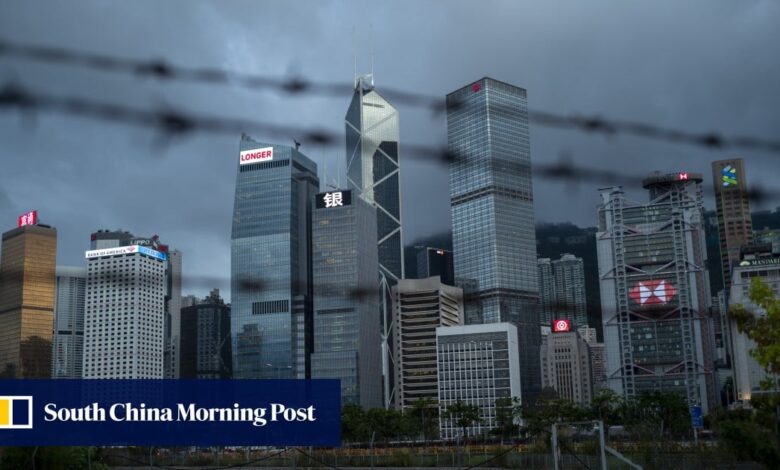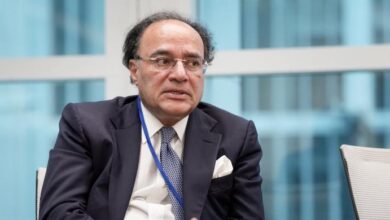Evolve or perish: death knell for Hong Kong’s deposit-taking companies as reform deepens

The decision by the Hong Kong Monetary Authority (HKMA)’s earlier this month to reduce the three-tier banking system to two, by killing off DTCs, is a “natural market evolution” since it scrapped the local interest-rate cartel/regime in 2001, some former bankers said.
“The three-tier banking structure and the popularity of DTCS are very much related to the interest rate rules started in the early 1980s,” said Wilson Chan Fung-cheung, associate director of MBA programme at City University. “After the rules were scrapped in 2001, demand for DTC services declined.”

DTCs have progressively faded from the scene over the past two decades, “so forcing them to either upgrade or exit will not have a big impact on the local banking sector,” added Chan, who spent 30 years as a banker before joining the university.
The current three-tier system comprises 149 licensed banks, 16 restricted licence banks otherwise known as investment banks, and 12 DTCs. Under the HKMA’s reform – the biggest in four decades – the DTCs will need to boost their capital to join the second tier within five years, or voluntarily exit the industry.
The interest-rate guidelines were introduced by the government in the early 1980s under a banking ordinance to prevent lenders from engaging in a race to the bottom to win customers. The law empowered the HKAB to set deposit and lending rates at weekly meetings.
Under rules set by the HKAB, all licensed banks strictly followed the same rates for time deposits, saving deposits as well as various loan products, creating a cartel within the industry.

“Back then, depositors with less than HK$500,000 (US$64,125) earned the same interest rate at different banks,” said Chan Tze-ching, a senior adviser at Bank of East Asia. “Those who wanted a higher return on their deposits, the only way was to go to the DTCs.”
While licensed banks are bound by cartel terms for deposits below HK$500,000, they are free to accept higher deposits and set their own rates for longer tenors, according to Chan. Investment banks can accept deposits of HK$500,000 and above, with no tenure restriction. DTCs can accept at least HK$100,000 from depositors for a minimum three-month maturity.
BEA’s Chan said the removal of the interest-rate cartel in July 2001 changed Hong Kong’s banking landscape by fostering competition and innovation.
“Licensed banks’ profit margins were squeezed because they had to offer higher rates to attract deposits and lower lending rates to compete for business loans,” he said. “This incentivised banks to develop more innovative products and wealth management services to generate fee income.”
While the move proved to be vital for Hong Kong to mature as an international financial hub, it also had unintended consequences that later contributed to the crisis in 2008 and 2009, Chan added.
Some banks became too sales-oriented, adding more fees and charges as well as pushing their customers, particularly unsophisticated depositors, to take financial and market risk that they did not fully understand. DTCs found it hard to compete with larger and stronger licensed banks, he added.
The aggressive mis-selling of these risky products was later blamed when losses snowballed in the aftermath of Lehman Brothers’ collapse that sparked the global financial crisis in 2008 and 2009.
The number of DTCs and restricted licence banks has shrunk to 28 currently from 200 in 1993, while their total market share by assets has declined to 1 per cent from 5.8 per cent over the same period, according to HKMA data. The 149 licensed banks today control 99 per cent of deposits in the banking industry.
The 12 DTCs only had about 2,500 deposit customers in total as of the end of last year, according to HKMA. There are 16 restricted licence banks in Hong Kong, including units owned by Wall Street banks Goldman Sachs, JPMorgan, Bank of America, and others.
Several DTCs are associated with major banking groups. They include BCOM Finance, which is a unit of the mainland lender Bank of Communications, Fubon Credit, a unit of Taiwan’s Fubon Bank, and Public Finance, which is part of Public Bank of Malaysia. The HKMA has not received any application for a DTC licence since 2009.
Restricted licence banks, which are usually investment banks that generate their prime income from capital market activities such as financial advisory and new stock listing sponsorship, City University’s Chan said.
“The HKMA has sought the preliminary views of the DTCs on their future business plans,” HKMA said in its directive earlier this month. “Most the existing DTCs have indicated intention to upgrade to the new second-tier.”
Source link




